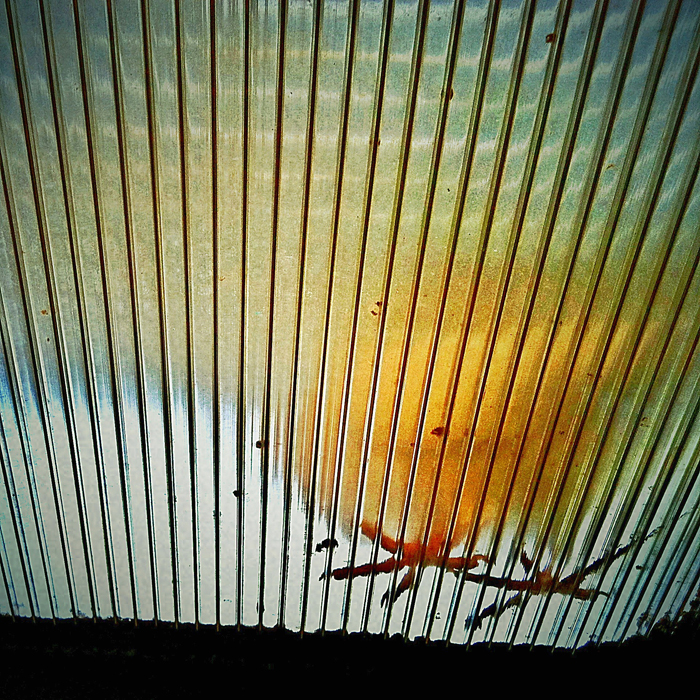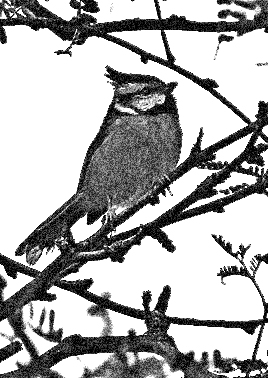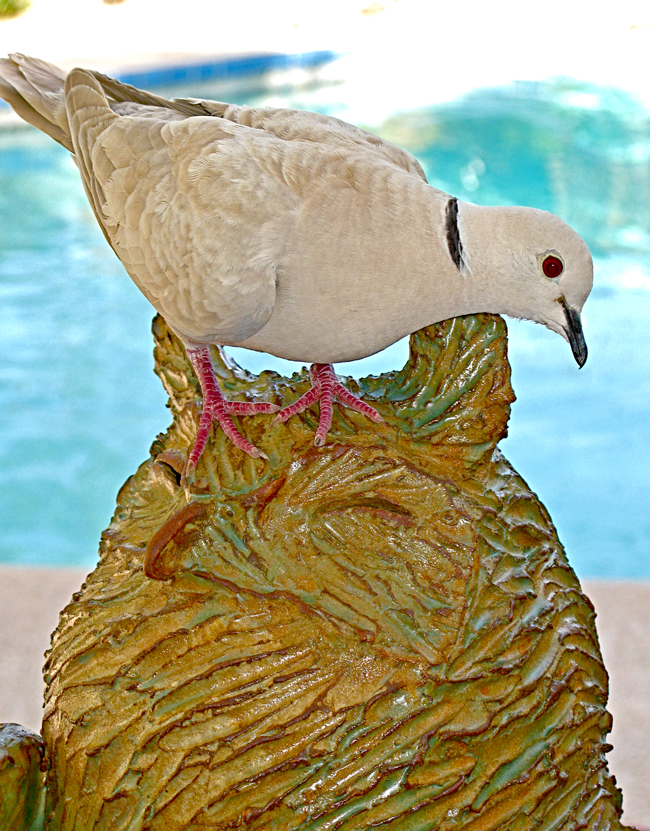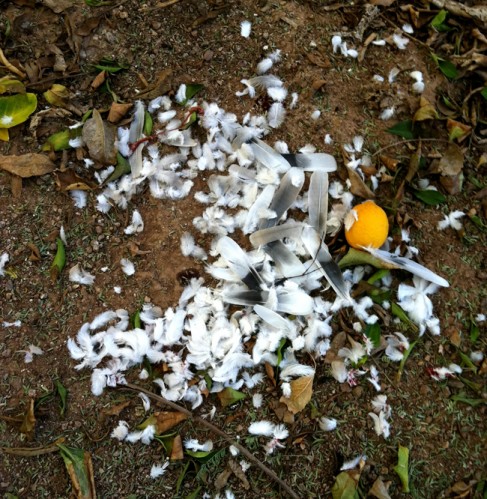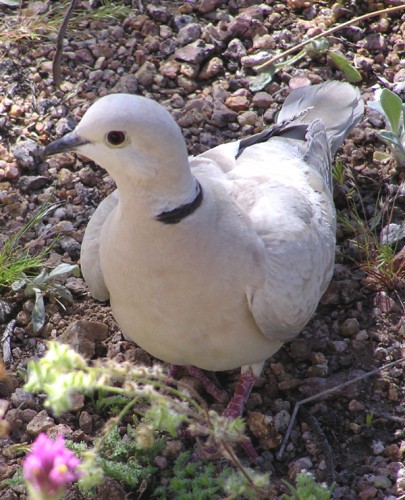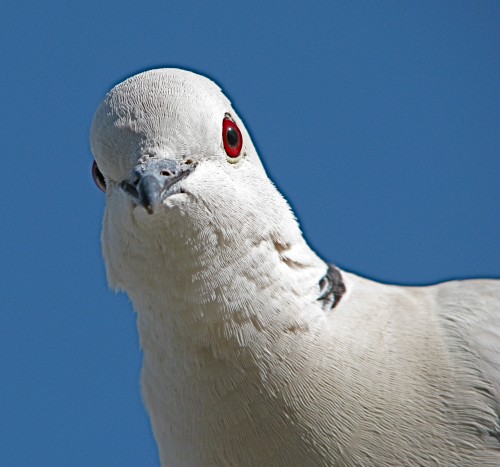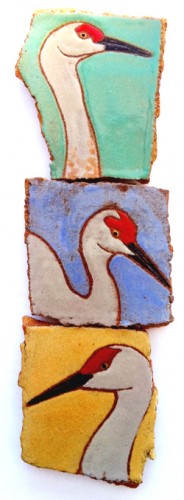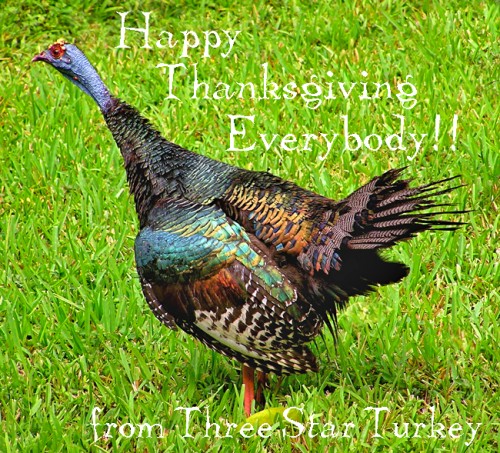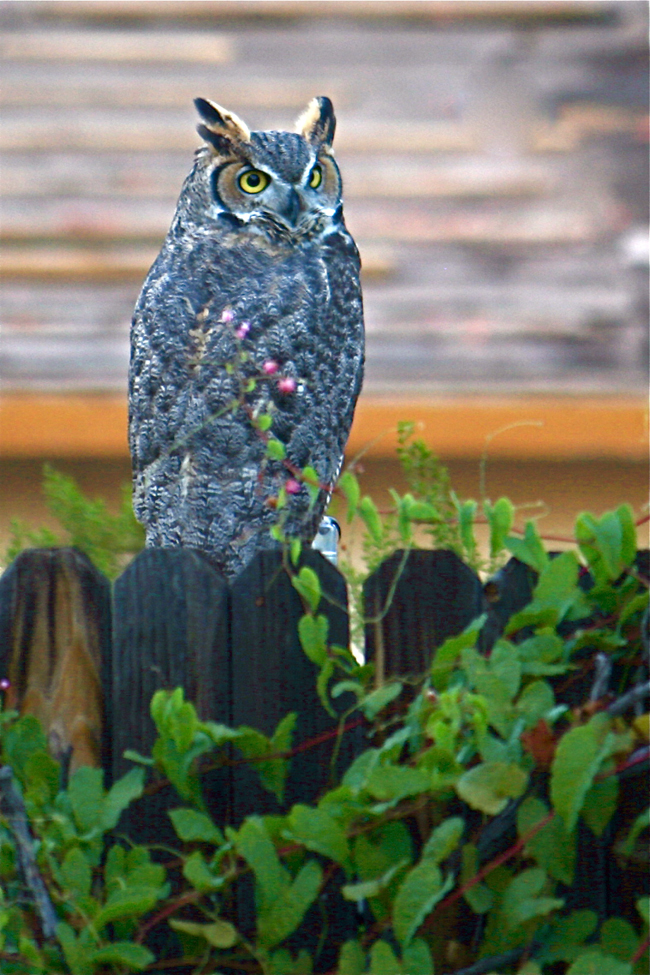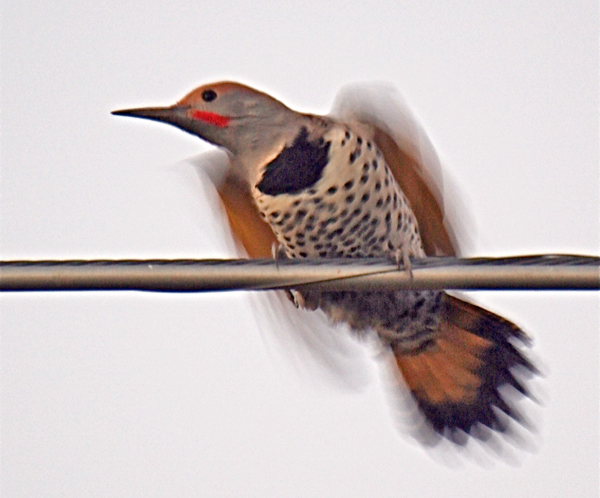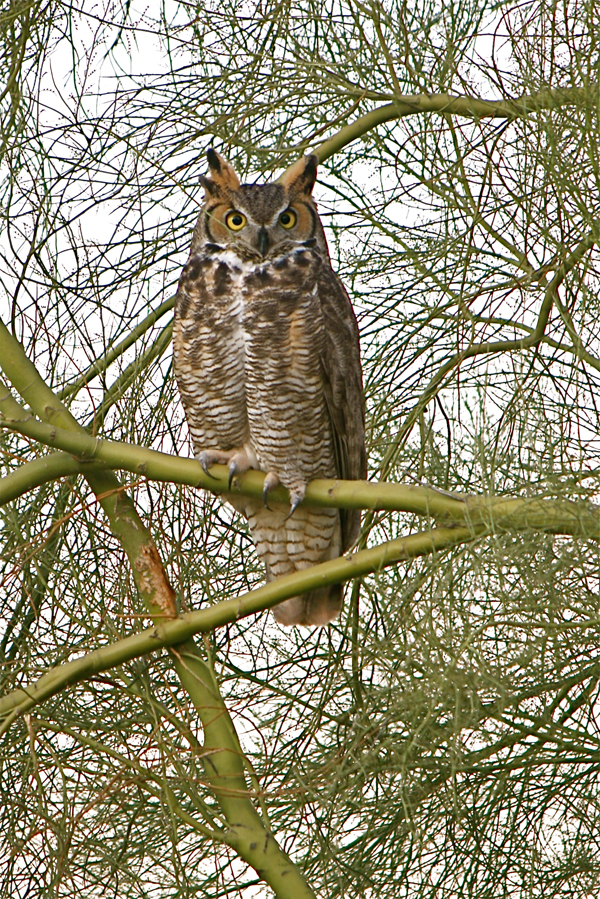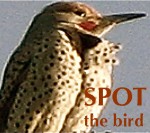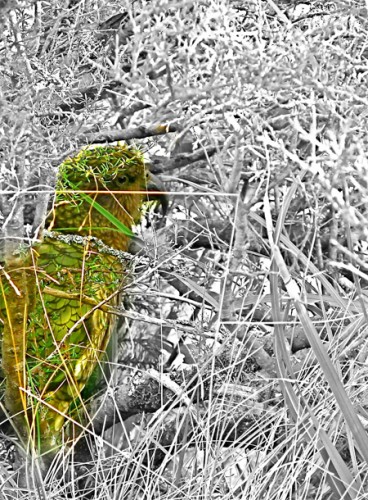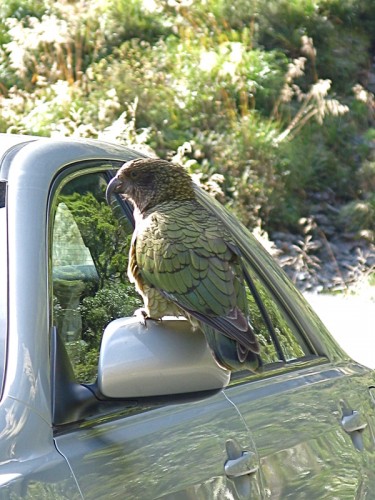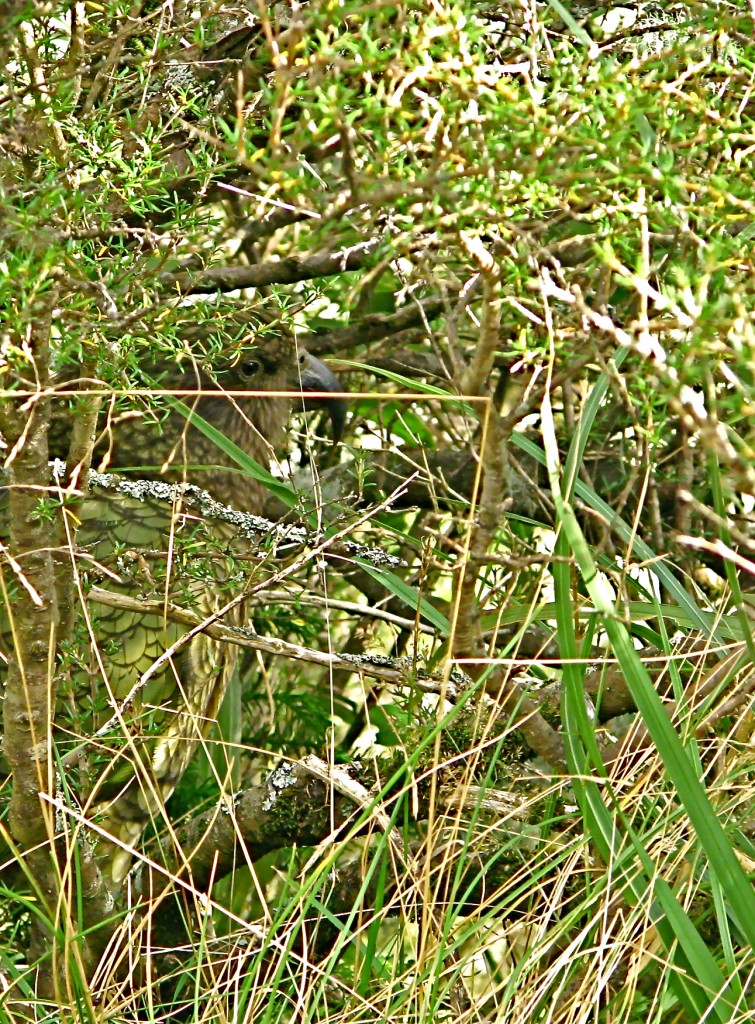Hoover’s hooves
It’s been a couple of months since the Cooper’s hawk (now long gone to its more northern, mountainous summer home) ate Hoover, the feral African Collared Dove who shared our garden. I’m not mourning him — in fact I’m thankful that a proper wild hawk absorbed his nutrients and energy instead of a second-storey window or someone’s over-fed, bored housecat — but I do miss him still. Cleaning up my computer desktop during yesterday’s stormy weather I uncovered one of my favorite photos of Hoover: a shot from below of the soles of his salmon-pink feet visible through the translucent plastic of the studio roof:
When I was working in there, he’d land with a thump and stomp to the edge to peer over to look for seeds, his rapid, trundling dove-steps clicking toenails all across the ridged panels. I’m glad I wasn’t in there the day the Coop’s took him from this very perch — the view from below would have been grimmer than this cheery reminder of him.

